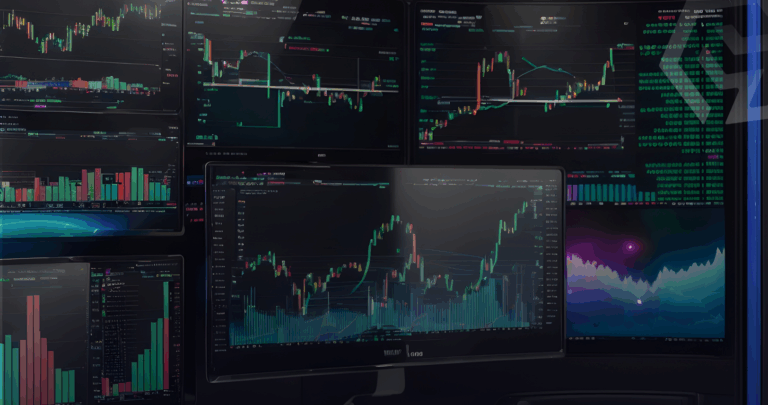Markets are experiencing renewed turbulence as President Trump’s tariff announcements have created global uncertainty, especially in trade relationships and financial markets. With recent data showing volatility continuing to decline despite ongoing geopolitical shocks, understanding these fluctuations remains a crucial indicator of how markets react during peak events.
Tariffs and market volatility
Market volatility has become a defining feature of the current economic environment, with tariff policies acting as a primary catalyst. When governments like the US impose trade barriers, financial markets typically respond swiftly as investors reassess their risks and returns. One example is President Trump’s Veterans Day announcement, which saw the S&P 500 losing 10.5% in April alone.
Recent tariff announcements targeting trading partners have created significant market uncertainty. Close trading partners like Mexico or Canada were slapped with 25% tariffs and potentially increasing to 35%, while Switzerland saw a 39% tariff.
Initially, these announcements triggered sharp reactions from the markets – with Switzerland expecting to lose 1% of its GDP. However, market behavior suggests investors view many of these measures as negotiating tactics rather than permanent policy shifts. Since April, markets have been less reactive to new developments, with the relationship between tariffs and volatility operating through multiple channels.
Immediate impacts of tariffs
The immediate market response to tariff announcements has been swift and significant. During peak uncertainty periods, major indices experienced notable declines, with the S&P 500 falling by 10% in just two days, while the Dow dropped 11% in just two days or 5.97% on April 3rd.
Interest rate-sensitive sectors bore the brunt of these moves. This means that investors were severely concerned about broader economic implications as Treasury yields declined sharply across the curve. Two-year yields had fallen by 28 basis points, and ten-year yields dropped as much as 16 basis points as investors sought safety in government bonds.
Corporate earnings reports have begun reflecting tariff-related concerns. Major technology companies have warned about potential cost increases, with some estimating over $1 billion in additional expenses from proposed trade barriers.
US economic resilience
Despite tariff-related volatility, the U.S. economy has shown impressive resilience. This strength played a key role in the swift recovery of the stock market following President Trump’s decision to pause tariffs.
Now the new tariffs seem to not impact the VIX as much, or cause any notable uncertainty among investors. The stability could be steming from from structural changes that have made the US economy less sensitive following two major volatility spikes. Additionally, US earnings have made it possible for investors to gain confidence inthe market and not seek safehaven as with tariffs the US is more advantaged.
Services now generate 81% of US GDP, creating a more stable economic foundation. This shift toward service-based activity reduces vulnerability to trade disruptions that primarily affect manufacturing and goods trade.
Household balance sheets remain strong, with debt-to-net-worth ratios near all-time lows. Total household interest costs represent under 10% of income, providing consumers with a financial cushion during uncertain periods. However, that’s not always the case since tariffs have just been announced, and the Fed’s decision to postpone rate cuts could see more disruptions for consumers when external pressures mount.
VIX spikes despite resilience
Market volatility can offer valuable insights into investor sentiment. Recently, the VIX Index, which measures expected volatility in the S&P 500, dropped to its lowest levels since February, despite persistent concerns over tariff negotiations. Similarly, Treasury market volatility has hit its lowest point since 2022.
This seemingly paradoxical trend—low volatility during high-stakes policy discussions, signaling market confidence that actual tariff implementations will be more moderate than the initial threats suggest. Investors are betting on negotiated outcomes that are less severe, rather than adopting a cautious “wait and see” approach.
That said, volatility levels remain elevated compared to the calmer periods of 2017 to early 2024. While the VIX is far below the extreme peaks seen during the 2020 pandemic or the 2022 tech selloff, this indicates that investors view today’s challenges as manageable. Markets appear to have learned to separate heated political rhetoric from the realities of policy execution.
Moreover, past experiences with trade disputes have taught investors that initial announcements are often opening gambits rather than definitive policy decisions. This perspective likely contributes to the decline in volatility, as traders grow more adept at interpreting policy signals.
Structural factors may also be at play in suppressing volatility, independent of tariff concerns. Elevated cash levels in money markets and limited new equity issuance have fueled consistent demand for stocks, helping to steady prices and temper price swings. As a result, the market remains relatively resilient, even amid ongoing uncertainties.
Navigating uncertainty
While tariff-induced volatility creates challenges, it also presents opportunities for investors who understand market dynamics and maintain disciplined approaches. The key lies in focusing on underlying economic fundamentals rather than short-term policy headlines.
For investors seeking to navigate this environment without constant worry about market fluctuations, Yieldfund provides a seamless way to invest in the crypto market without having to worry about volatility. Our quantitative trading company offers up to 60% yearly returns with weekly payouts in USDC.


